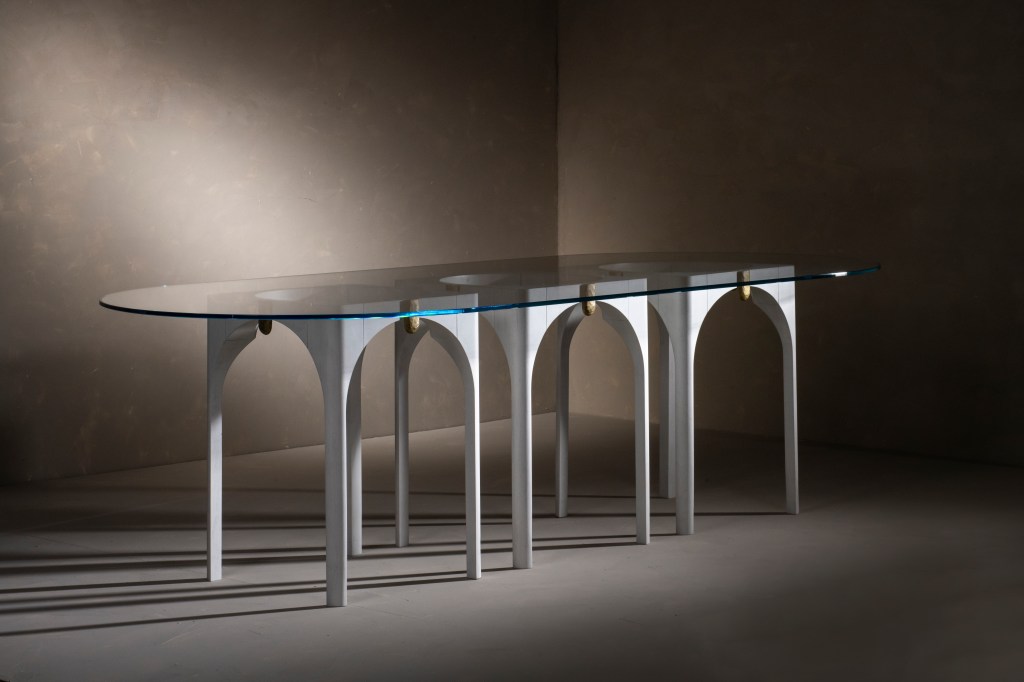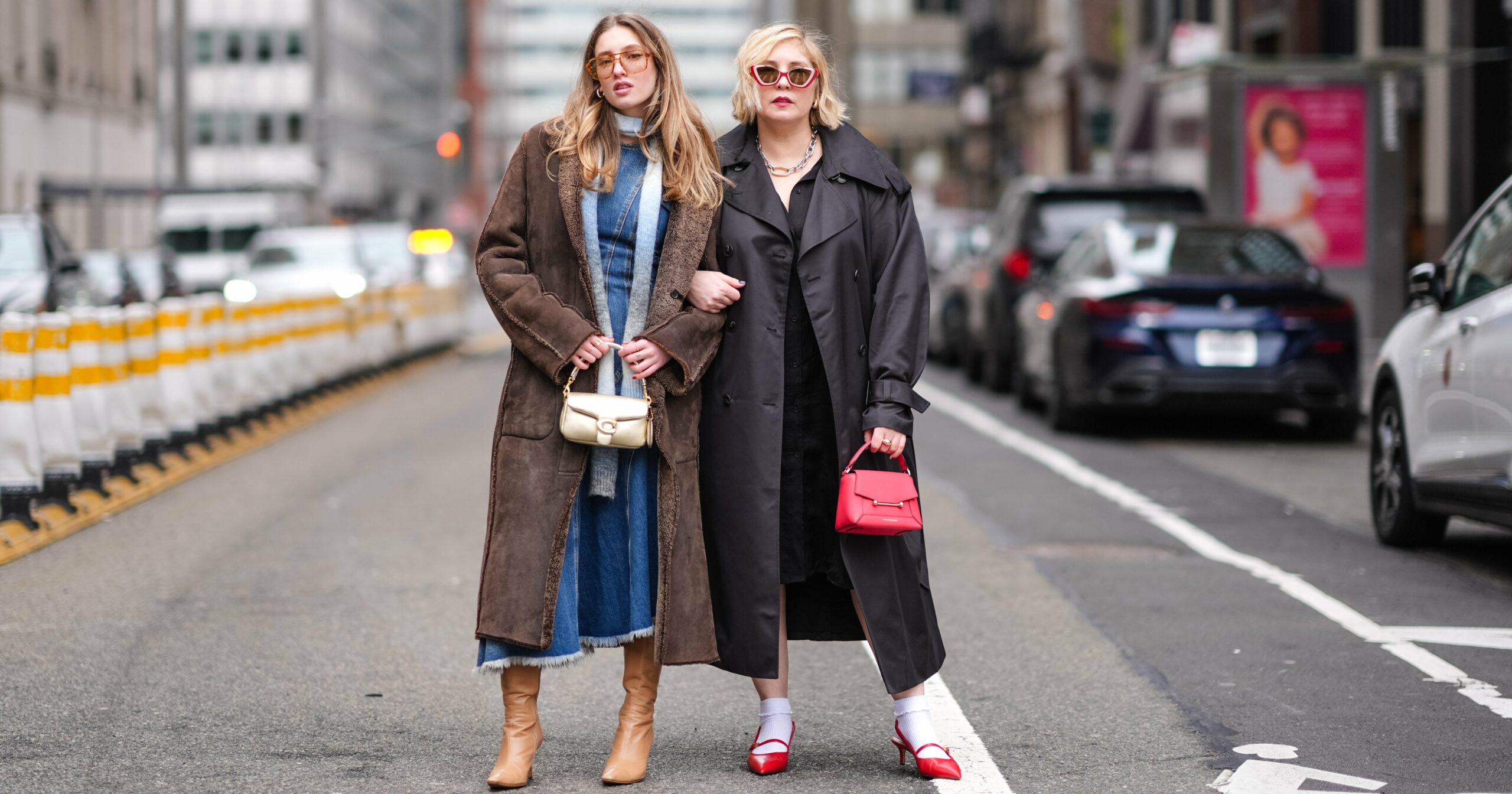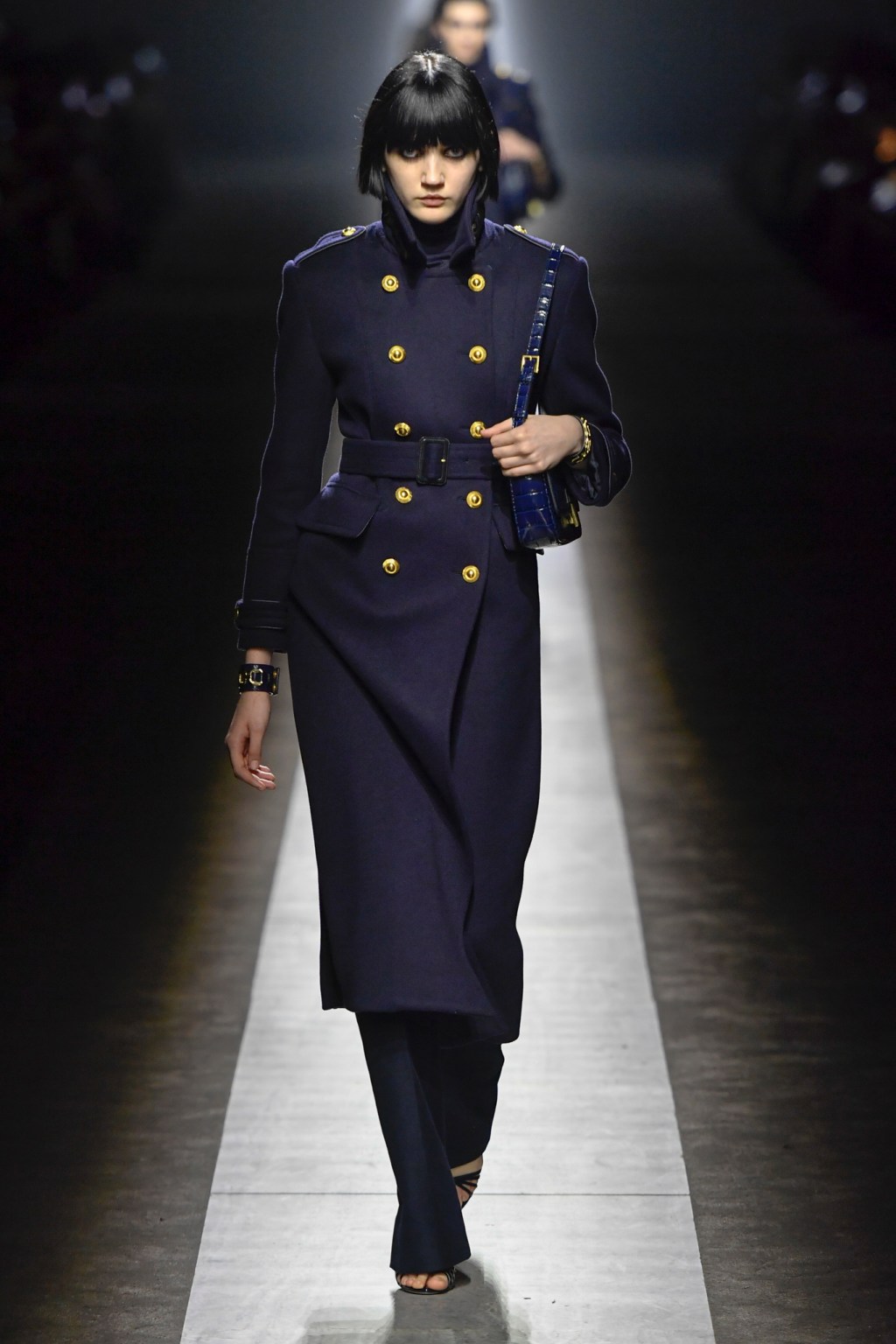The growing focus on handmade and artisan goods permeated the luxury furnishings and decor showrooms at the recent High Point Market in High Point, N.C. The spring edition of the semiannual furnishings show saw multiple designer collaborations and new collections focusing on the makers behind the pieces.
One of those collections made its reintroduction of sorts in the Thayer Coggin showroom. Coggin — known for its longtime collaboration with midcentury modern designer Milo Baughman — welcomed Craft Associates to show its reissue of Baughman’s dining and case pieces designed for Directional Furniture in the 1960s.
While Baughman focused mostly on upholstery seating with Thayer Coggin during that time, he created the more wood-centric line simultaneously for Directional Furniture. Craft Associates managing partner Israel Jones said he brought the idea of a collaborative showing to the team at Thayer Coggin, noting the two companies have similar DNA.
“We’re American-made, we’re high-end,” he says. “We’re not going to step on your toes, and it’ll be a good partnership. The line is beautiful and it’s relevant today.”
Craft Associates was founded in 1952 by famed designer Adrian Pearsall. Jones and his family — who also own high-end furnishings retail operation The Swanky Abode — resurrected the brand in 2014. They specialize in handcrafted, high-end pieces, such as the ones in the Milo Baughman collection.
Jones said they stayed true to Baughman’s designs, not altering table heights or seat depths to meet current standards, with one exception.

“We’re a little bit higher-end in how we operate compared to Directional Furniture, so we changed all the case goods to solid wood rather than using veneers,” he says. “Otherwise, they’re identical. I’m a purist, and I wanted to honor what he did.”
Honoring the past played a role in Abner Henry’s latest collection in collaboration with the Metropolitan Museum of Art. After debuting a furniture-as-art line with The Met last spring, the Amish high-end furnishings-maker this time took inspiration from the museum’s architecture for its Facades collection.
The line includes seven pieces — three tables, two cabinets, a dining chair and a coat tree — with sweeping curves and sharp angles mimicking The Met’s ornate exterior. Each piece comes with Abner Henry’s craftsmanship carried out in its Ohio factory and metal forge.
“For the coat rack, we heated stainless steel to 1,800 degrees, which makes it turn a gold color,” said Ernest Hershberger, chief executive officer and founder of Abner Henry. “So you essentially have a stainless gold finish.”
Abner Henry also collaborated with celebrity designer Sasha Bikoff for a bold collection inspired by the postmodern Memphis Milano design movement. Standout pieces included the Eloise vanity, a poppy pink homage to Michael Graves’ Plaza vanity for the Plaza Hotel in New York.

“I grew up in Manhattan, and I love the story of Eloise living the Plaza,” Bikoff said. “So I decided to make a vanity inspired by that. We’ll call it the Eloise, in a classic two-tone paint colorway. And we kept the cerused wood that was on the original vanity as well.”
While Bikoff’s Crayola-hued collection seems a departure for more reserved Abner Henry, the designer said the company’s finish capability with its on-site color lab made customizing the line easy.
“When I saw what they were able to do with the finishes — it’s pretty amazing,” she said. “The exaggerated cerusing and really getting that grain, but also the stain on it and being able to mix that with our colors — no one’s doing that but them.”
Bold colors and patterns characterize South African luxury brand Ardmore’s ceramics, fabrics and furnishings, which made their High Point debut through a partnership with Ngala Trading. Ngala — which connects African makers such as Ardmore with the American design market — offered interior designers and buyers at market a range of one-of-a-kind and customizable fabrics, furnishings, accessories and ceramics from the Ardmore line, which is designed by small makers and artisans in Africa.
“Ardmore was started by my mom as a ceramic studio, and now we work with around 50 African artists,” said Jon Berning, director of Ardmore Design. “We were initially ceramics and then moved into homeware and fabrics because we didn’t want to turn our ceramic arts into a product because it would lose its soul and essence.”
While Berning said products such as cushions and fabric by the yard offer the company a more scalable way to expand its offerings without diluting the brand, Ardmore still creates custom pieces, such as its limited-edition sofas that the company caps at 250 and then discontinues.
Jaipur Living also works with global artisans to produce its Manchaha rug collection. The company taps weavers in India to take leftover yarn that might otherwise go to waste to create their own custom, one-of-a-kind designs.

“We essentially say, ‘Here is your yarn, bring whatever you want to life,’” said Meredith Garcia, vice president of brand and content at Jaipur Living. “You’re giving a generationally skilled weaver the blank slate to create whatever narrative they want to bring to life.”
Each rug comes with a biography of the weaver and the story behind the design. These stories of the makers behind the products give artisanal pieces like these a deeper meaning for the consumer who puts them in their home.
“What’s so magical is these weavers are telling their family stories — maybe it’s their child just got married, maybe it’s the death of a loved one,” Garcia said. “People are so interested nowadays in the stories behind the products that they buy. It gives them that really interesting story that they can tell people who come in their home, and they can feel connected to these people who wove this one-of-a-kind piece for them.”



